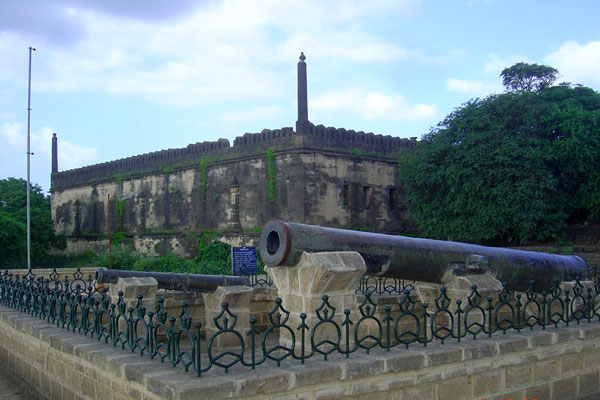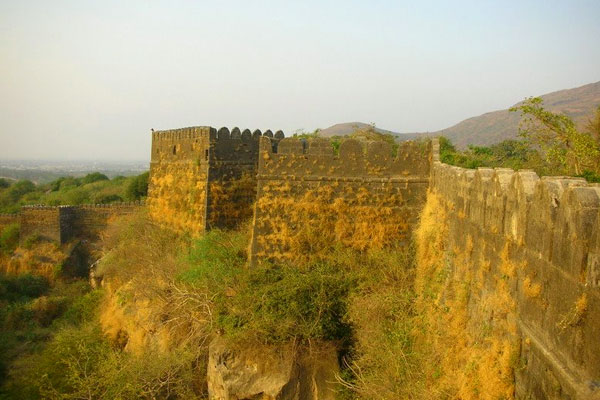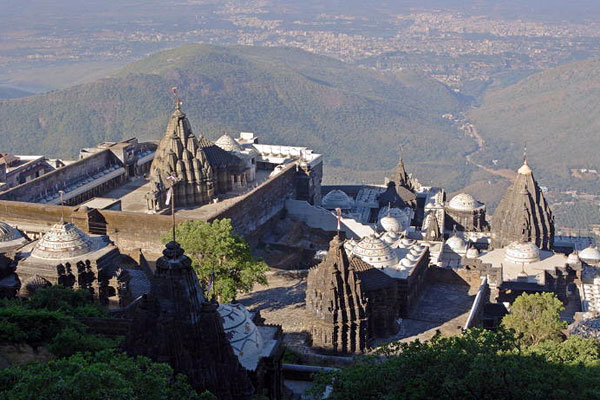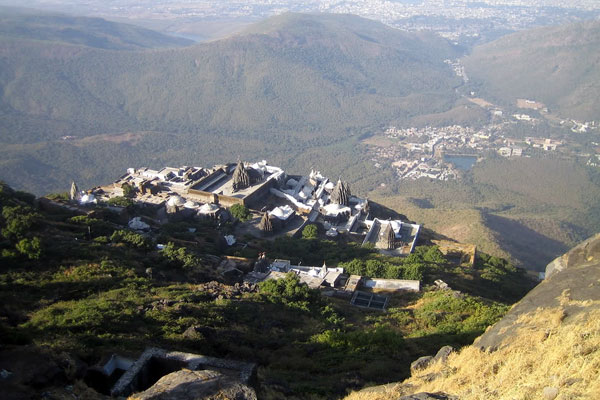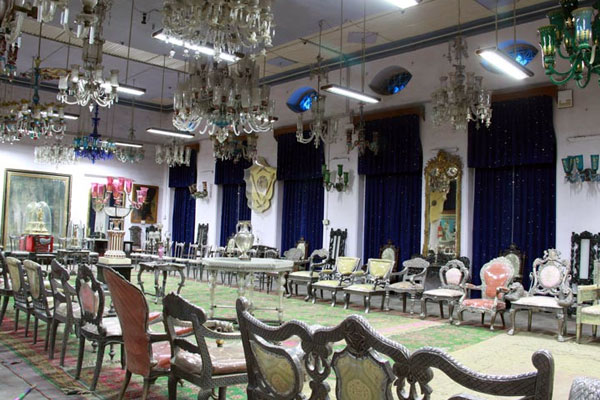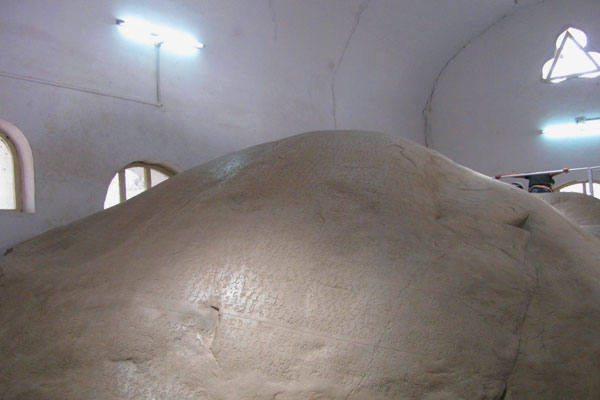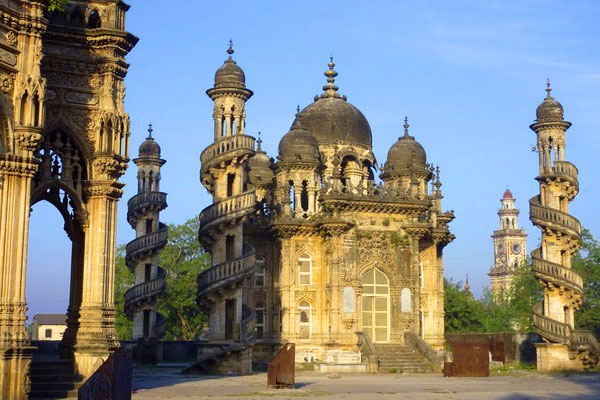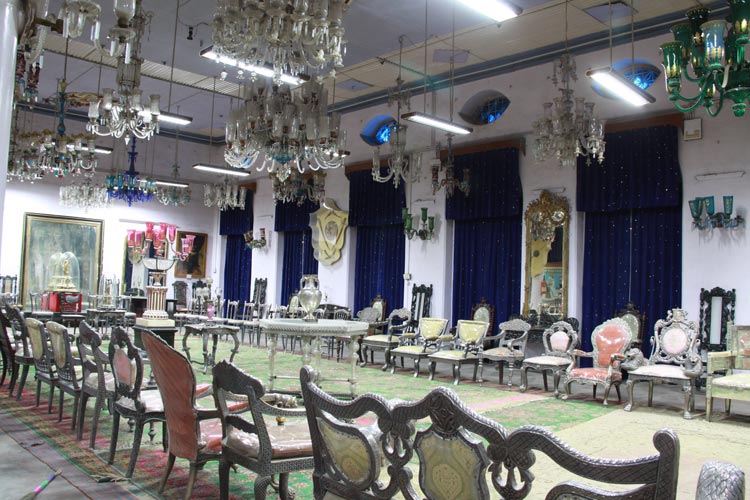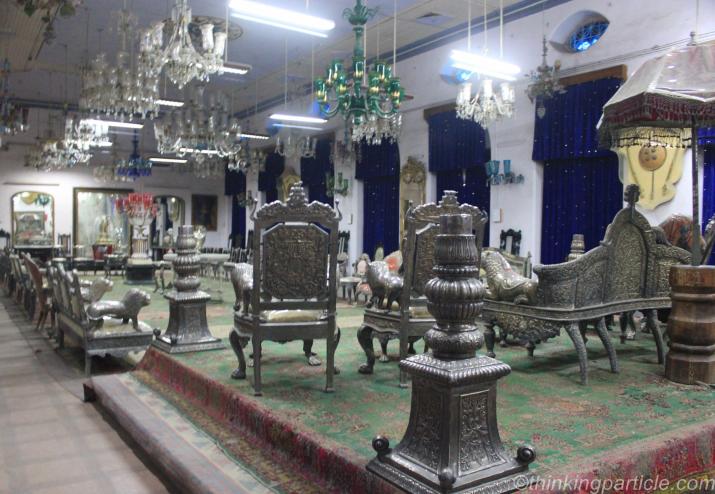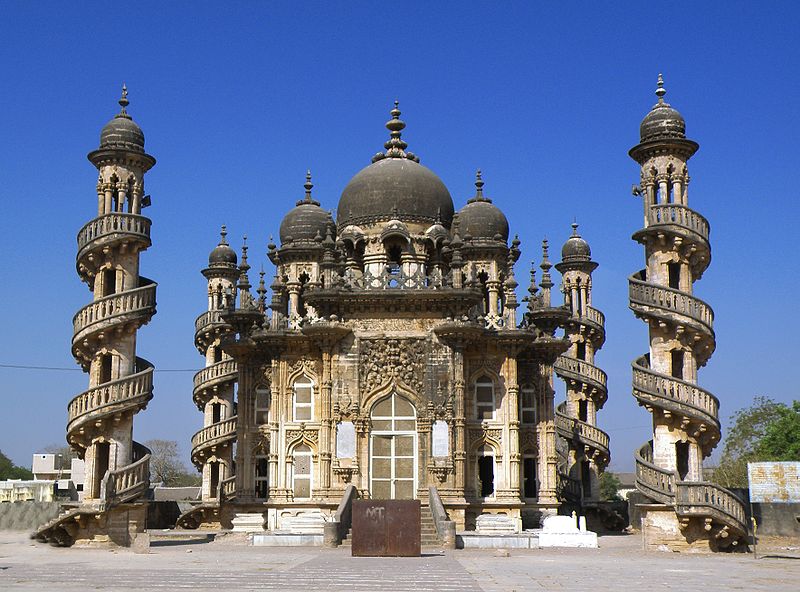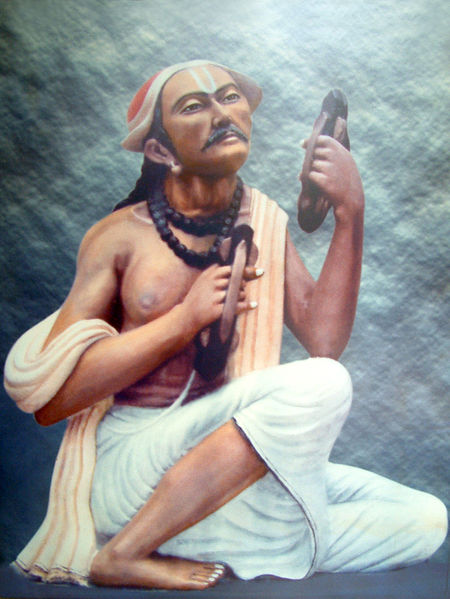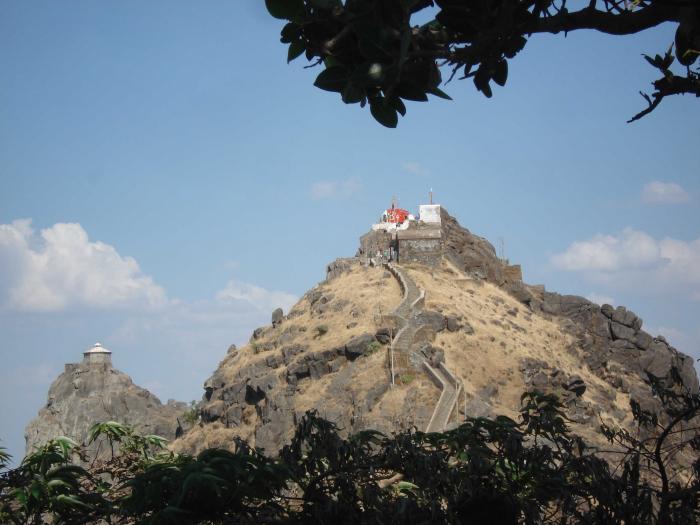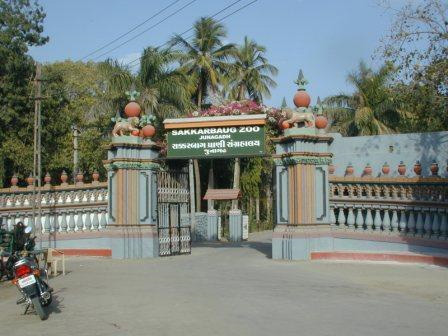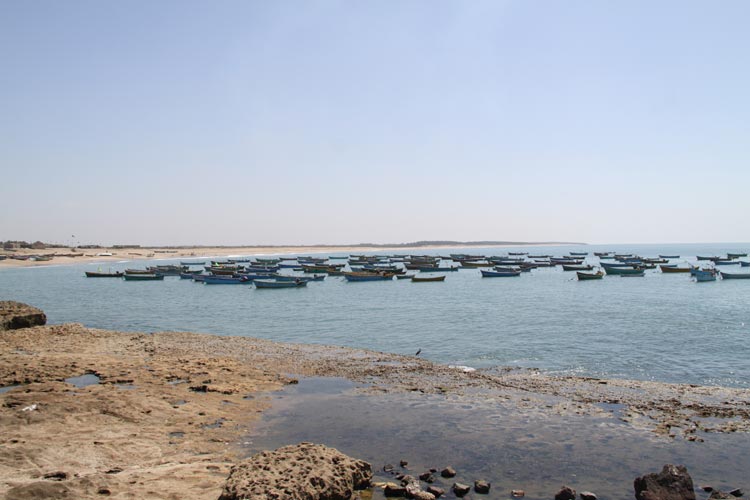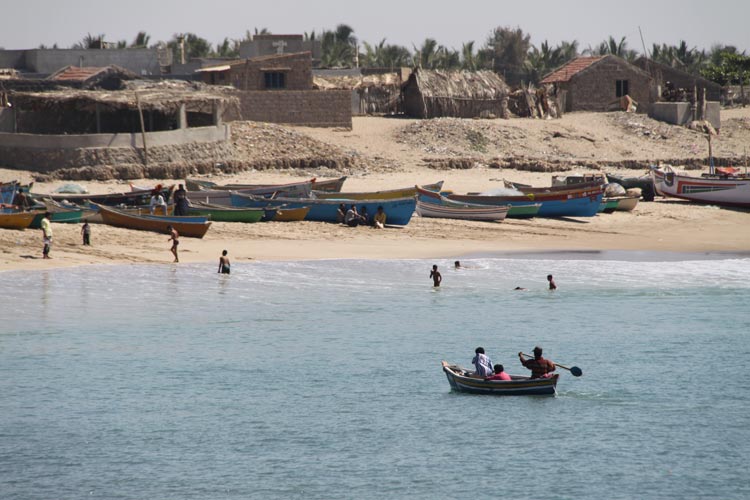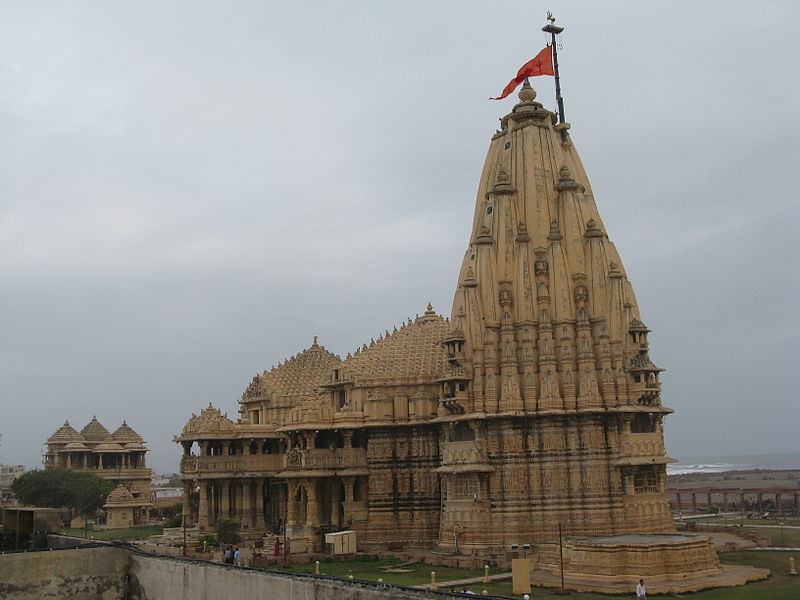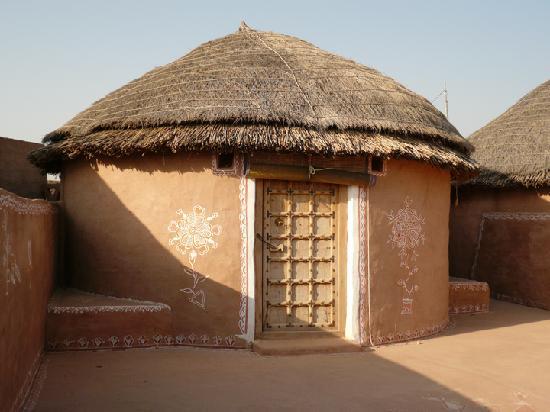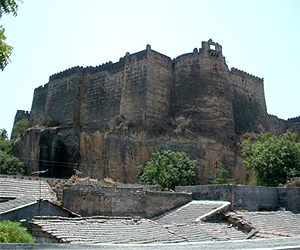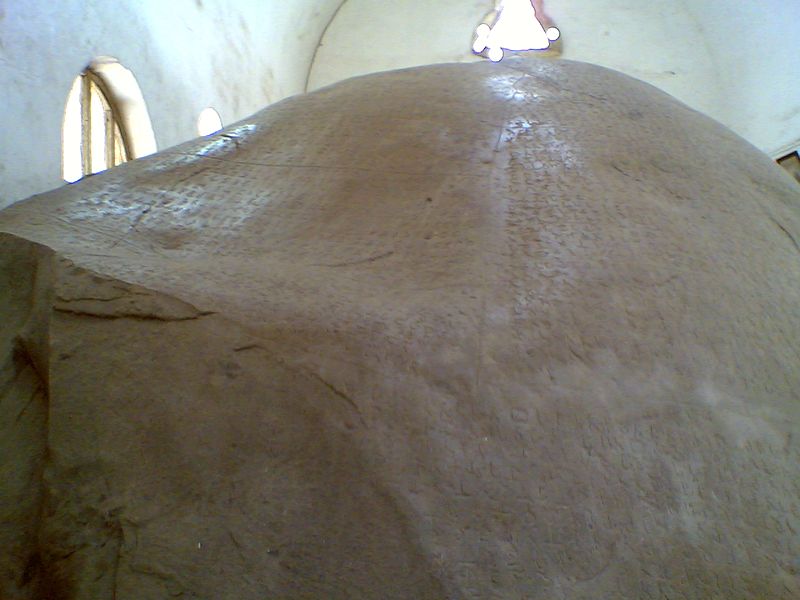Junagarh, The fort city of Gujarat
General Information
District:JunagadhState:GujaratCountry:IndiaArea:0Language Spoken:Gujarati, Hindi, EnglishLong Distance Code:+91-285Importance:Asokan rock inscriptions and a historical cityBest Time To Visit:October to MarchDescription:
The ancient town of Junagadh breathes history. Junagadh's history can be traced back to nearly 250 B.C. This ancient fortified city rich in myth and legend, lies at the foot of Girnar Hill and takes its name from the Old Fort which circles the medieval town. History says that this old town was under the rules of many dynasties such as the Maurya, Kshatrapa, Gupta, Vilabhi, Chudasama, Gujarat Sultans and Babi Nawabs. But it was during the rule of Ashoka the great and later during the ruling tenure of the Babi Nawabs that the prosperity and the prominence of Junagadh grew. Both political powers and religious influences enriched the culture and created edifices leaving their mark on the architecture of Junagadh. Owing to the different dynasties and religions like the Hindu, Buddhist, Jain and later Islam, Junagadh provides a treat to the traveler. Various buildings of various time periods and influenced with various kinds of architecture can be sited in Junagadh. The Babi rulers of Junagadh, Nawab Mohhabat Khan II (1851-82 AD) undertook the beatification of Junagadh and patronized the construction of several building and urban design projects
On the way to Girnar, fourteen rock edicts of the Emperor Ashoka can be seen inscribed on a great boulder. The inscriptions carry Brahmi script in Pali language and dates back to 263 B.C. On the same rock are inscriptions in Sanskrit added around 150 AD by Rudradama and in about 450 AD by Skandagupta, the last emperor of the Maurya. On the way to the Girnar Hill temples, you pass a huge boulder on which Emperor Ashoka inscribed 14 edicts in around 250 BC. His inscription is in the Pali script. The 14 edicts are moral lectures, while the other inscriptions refer mainly to recurring floods destroying the embankments of a nearby lake, the Sudershan, which no longer exists. This huge rock is of uttermost importance to not only the historians and archaeologists but also to the people visiting the site.
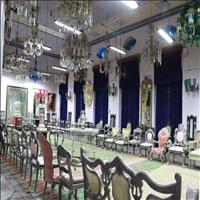 The place where the Nawabs of Junagadh held a public audience, which has been turned into a museum. It has an extravagant display of weapons and Armour from the days of the Nawabs, with their collections of silver chains and chandeliers, settees and thrones, howdahs and palanquins, and a few cushions and gowns, as well as a huge carpet, which was woven, in Junagadh's jail. There's a portrait gallery of the Nawabs and local princes, including photos of the last Nawab with his various beloved dogs.
The place where the Nawabs of Junagadh held a public audience, which has been turned into a museum. It has an extravagant display of weapons and Armour from the days of the Nawabs, with their collections of silver chains and chandeliers, settees and thrones, howdahs and palanquins, and a few cushions and gowns, as well as a huge carpet, which was woven, in Junagadh's jail. There's a portrait gallery of the Nawabs and local princes, including photos of the last Nawab with his various beloved dogs.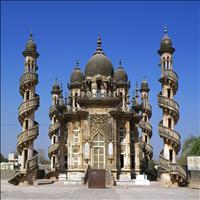 This stunning mausoleum of Mohhabat Khan is perhaps the unique piece of architecture in whole of India. Resplendent with silver doors and intricate architecture, including minarets encircled by spiraling stairways, the Maqbara is a beautiful piece of an 18th century structure. It is a fine specimen of medieval structure. On the one side of this mausoleum is the Vazir's Maqbara and on the other side is the Jama Masjid.
This stunning mausoleum of Mohhabat Khan is perhaps the unique piece of architecture in whole of India. Resplendent with silver doors and intricate architecture, including minarets encircled by spiraling stairways, the Maqbara is a beautiful piece of an 18th century structure. It is a fine specimen of medieval structure. On the one side of this mausoleum is the Vazir's Maqbara and on the other side is the Jama Masjid.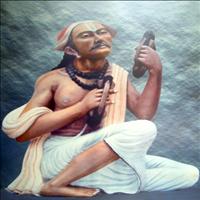 The great poet and saint of Gujarat, Narsinh Mehta was the one who nearly transformed the medieval Hindu society by his preaching. This place is dedicated to the great saint, a philosopher, social reformer and an ardent devotee of God. The circular platform, from where the great poet sang bhajans is the place devoid of glamour full of subtlety. It is situated on the eastern side of the city near the Majewadi Gate. There is a small temple with images of Damodar Rai and Narsinh Mehta.
The great poet and saint of Gujarat, Narsinh Mehta was the one who nearly transformed the medieval Hindu society by his preaching. This place is dedicated to the great saint, a philosopher, social reformer and an ardent devotee of God. The circular platform, from where the great poet sang bhajans is the place devoid of glamour full of subtlety. It is situated on the eastern side of the city near the Majewadi Gate. There is a small temple with images of Damodar Rai and Narsinh Mehta.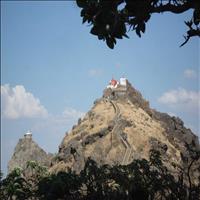 The famous mythological hill, supposed to be an extinct volcano, at foot of which the whole town was established is respectable for Hindus and Jains equally. It was supposed to be a flying mountain. But today it is more famous for the 16 carved and sculptured marble Jain shrines that adorn this famous hilltop. These beautiful Jain temples are dedicated to Neminath and Mallinath. The Hindu temple dedicated to Lord Shiva also draws thousands of devotees up the hill who climb the fleet of 10,000 steps build in the early 20th century.
The famous mythological hill, supposed to be an extinct volcano, at foot of which the whole town was established is respectable for Hindus and Jains equally. It was supposed to be a flying mountain. But today it is more famous for the 16 carved and sculptured marble Jain shrines that adorn this famous hilltop. These beautiful Jain temples are dedicated to Neminath and Mallinath. The Hindu temple dedicated to Lord Shiva also draws thousands of devotees up the hill who climb the fleet of 10,000 steps build in the early 20th century.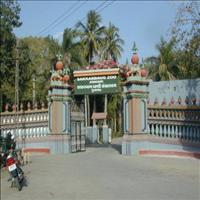 Established in 1863 AD, Sakkar Baugh is the oldest zoo in Gujarat and the third oldest in India Here the Gir lions are held and bred in captivity. An open zoo is developed in the area of 500 acres of land. The zoo was specifically established to save the lion from extinction and is surprisingly good with lions, tigers and leopards being the main attraction. There is also fine museum at the zoo with paintings, manuscripts, archaeological finds and various other exhibits including a natural history section.
Established in 1863 AD, Sakkar Baugh is the oldest zoo in Gujarat and the third oldest in India Here the Gir lions are held and bred in captivity. An open zoo is developed in the area of 500 acres of land. The zoo was specifically established to save the lion from extinction and is surprisingly good with lions, tigers and leopards being the main attraction. There is also fine museum at the zoo with paintings, manuscripts, archaeological finds and various other exhibits including a natural history section.Named after Madhav Raoji, this place finds a mention in the old Hindu scriptures. The temple of Madhav Raoji is a big highlight along with a beautiful beach in this small sleepy town. Legend says that Lord Krishna got married to Rukmini at this very place.
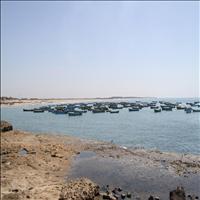 Chorwad Beach
Chorwad Beach66 kms from Junagadh Chorwad is a delightful resort on the sunny coast of Gujarat.
Ahmedpur Mandvi
Close by the sea, with an option to entertaining oneself lazing on the beach, swimming or enjoying water sports facilities, Ahmedpur Mandvi is one of the finest beaches of the country. Ahmedpur Mandvi commands a panoramic view across the Creek of Diu Island. The 6-km big beach provides utmost relaxation to visitors and ideal place for water sports and enjoying traditional food in huts decorated with local style of architecture
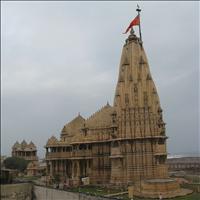 Situated 79 Kms. from Junagadh the legendary shore temple of Somnath is one of the twelve most sacred Shiva shrines in India. According to the legend, Somnath is as old as creation, built by none other than Som, the Moon God himself. Somnath was destroyed seven times and was always rebuilt. The temple has grown up from ashes, nearly seven times like the bird Phoenix. The present structure was built by Ahilyabai Holkar, the queen of Indore in 1783.
Situated 79 Kms. from Junagadh the legendary shore temple of Somnath is one of the twelve most sacred Shiva shrines in India. According to the legend, Somnath is as old as creation, built by none other than Som, the Moon God himself. Somnath was destroyed seven times and was always rebuilt. The temple has grown up from ashes, nearly seven times like the bird Phoenix. The present structure was built by Ahilyabai Holkar, the queen of Indore in 1783. It was full of a great treasury and when Mehmud of Gazni heard of it he looted the temple in 1026 A.D. and carried away all the treasure that he could. The present site of Somnath is a pile of ruins and little is known of the early history of this place. It is believed to have been erected by the Vallabhi Kings in about 480-767 A.D.
Although essentially a Brahmanical temple, the influence of Jain architecture is clearly discernible. What remains of the earlier structures lie scattered at a short distance from the site. One can find here the richly carved doorways, the sculptured representations of Nandi, Siva's bull, and the figures of goddesses and their female attendants.
 The dwelling f the King of Animals, the majestic lions is what Sasan Gir is famous for. The Gir National park, located at an hours distance from Junagadh is the last refuge of the Asiatic lion on Earth. It is Spread over 2450 hectares, and offers visitors the best in flora and fauna.
The dwelling f the King of Animals, the majestic lions is what Sasan Gir is famous for. The Gir National park, located at an hours distance from Junagadh is the last refuge of the Asiatic lion on Earth. It is Spread over 2450 hectares, and offers visitors the best in flora and fauna.Sasan Gir Lion sanctuary is definitely one of India's success stories. From a pitiful number of around twenty lions at the turn of the century there are now approximately three hundred lions in the park. Best visited from December to April, the visitors can have a better look if they drive through the park in Jeep. Although the Asiatic lions of Gir, incredibly awe inspiring animals, are supposed to be used to human presence it is always better to be cautious. Best time to view this animal is during early daytime or late in the night.
The chinkara, wild boar, striped hyena, jackal, common langur, porcupine, hare and the black buck also share the Jungle with the lions of Gir.
As visitors pass through this park, they can view rivers making their way through the lush green thick forests. The main attraction of the park is park the. It is also home to over 200 species of birds including the peafowl, grey partridge, Boneli's eagle, crested serpent eagle, jungle bush quail, painted sand grouse, common green pigeon and several species of doves. The other attractions are the leopard population in the Jungle which is the most in any part of India and the crocodile breeding farm. But by and large, it is the Lion that makes your visit to the park worthy.
The Kankai Mata and Tulsishyam are two temples inside the jungle and are famous for their natural hot spring tanks.
The tribal life of the Siddis is also a major attraction of Gir. These Siddis are supposed to be of some African breed, and are believed to be brought here by a ruler of Junagadh as slaves and they stayed back. Now they have adopted the language and the dresses of the locals and it is only their body and face that differentiates them from the rest.
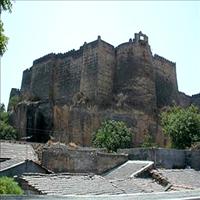 This is the very fort from where the city derives its name. Famous in by gone times for its virtual inaccessibility, the Uparkot or Upper Fort is girdled by a wall that is, in some places, over 20m high. An ornate entrance gateway leads to the ruins. A mosque still stands in a state of preservation. A rare canon called the Nilam Toph was acquired by the Nawab from Diu which can be seen here.
This is the very fort from where the city derives its name. Famous in by gone times for its virtual inaccessibility, the Uparkot or Upper Fort is girdled by a wall that is, in some places, over 20m high. An ornate entrance gateway leads to the ruins. A mosque still stands in a state of preservation. A rare canon called the Nilam Toph was acquired by the Nawab from Diu which can be seen here. Other than the magnificent fort, the premises hold other sites to be visited like the two step wells, Jama Masjid and Buddhist caves. It's said the fort was besieged for a full 12 years. In all, it was besieged 16 times. It is also said that the fort was abandoned from the 7th to10th centuries and, when rediscovered, it was completely over grown by jungle.
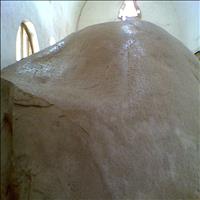 Ashokan Rock edicts are situated at Lat. 210 31 N; Long 700 28 E. The Rock edicts of Emperor Ashokan were engraved on a granite boulder on the slope of Girinagara or Urjayata Hill. On the eastern face of it was engraved 14 Rock edicts by Ashoka and later epigraphs of Mahakshatrapa Rudradaman I and Skandagupta were also recorded on it, the Rock edict was first reported by James Todd in 1822. The other two epigraphs have a common purpose, which was recording the history of the breaking of dams of Sudarshan Lake occurring because of the turbulent storm waters of river Suvarna Sikta and Palasini rushing down the hill slopes. These edicts which are in Brahmi script provide history of this lake and breach of it followed by repairs, down from Mauryan to Gupta period.
Ashokan Rock edicts are situated at Lat. 210 31 N; Long 700 28 E. The Rock edicts of Emperor Ashokan were engraved on a granite boulder on the slope of Girinagara or Urjayata Hill. On the eastern face of it was engraved 14 Rock edicts by Ashoka and later epigraphs of Mahakshatrapa Rudradaman I and Skandagupta were also recorded on it, the Rock edict was first reported by James Todd in 1822. The other two epigraphs have a common purpose, which was recording the history of the breaking of dams of Sudarshan Lake occurring because of the turbulent storm waters of river Suvarna Sikta and Palasini rushing down the hill slopes. These edicts which are in Brahmi script provide history of this lake and breach of it followed by repairs, down from Mauryan to Gupta period.Closed On: Wednesday
